Injuries kept to a minimum, no equipment needed, and done in no time
Many of us have found that sometimes it is not enough to simply ride a bike or go for a run to improve our performance, especially if our outings start to be very similar in terms of duration and effort. For those of you who want to make progress or keep injuries under control, we suggest a series of simple isometric exercises. The best thing is that they won't take much time and doing them 2 or 3 times a week will give very good results.
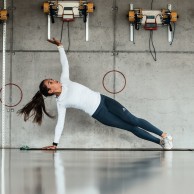
What are isometric exercises?
They are a type of exercise that involve muscle tension without the need to move from one place to another. But the idea of isometric exercise is usually made clearer by explaining its characteristics and advantages than by defining it.
To do isometric exercises we don't need any specific equipment, just our body and at most a small mat or a comfortable surface. We don't need to go anywhere specific, we can do them at home. The complete series that we propose can be done in just a few minutes. In addition to improving your performance as a cyclist, they are also suitable -varying types of exercises and intensity- for recovering from injuries or returning to physical activity after a period of inactivity.
RECOMENDADO

Black Friday Garmin 2025: the ultimate guide to choosing your GPS at the best price

How to wash your cycling clothes? 10 keys to make them always look new

Cycling can help you fight the effects of the time switch

Easy to apply tips for riding faster

The real importance of signing up for a race

The best road bikes of 2025
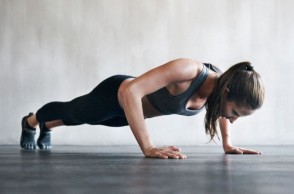
Benefits of isometric exercises
The benefits of isometric exercises include:
- You work with your own body, without the need for external elements.
- They are short and intense exercises, which reduces the total training time.
- It allows training focused on strengthening specific parts of the body.
- It is an appropriate and common practice in rehabilitation processes.
- They help to correct postural problems, whether when cycling, running, sitting in the office or standing for long hours.
Equipment needed to perform them
Basically, most isometric exercises can be performed without any equipment other than your own body. However, elements such as elastic bands or dumbbells can help in the process.
10 isometric exercises for improvement
With this series of isometric exercises we will not only strengthen the main motor of cycling, the legs, but we will also tone and maintain the core and arms.

1.Horizontal isometric plank with forearm support (5x30"/15")
On a "soft" surface on which to rest your forearms, we place ourselves face down. We raise our body by resting on the tips of our feet -legs slightly open and forearms -making a triangle between hands and elbows-. Hold the position for 30 seconds and do 5 repetitions with 15-second breaks between planks.
2.Squats (3x20")
It is a basic isometric exercise in which most of the muscles and tendons of the thigh, buttocks and hip are exercised. Although it is a complete exercise and perfect for cyclists, attention must be paid to its execution as it could be harmful if performed incorrectly. In this routine it is sufficient to do 3 sets of 15-20 repetitions each.
3.Contralateral plank (2x 10x10")
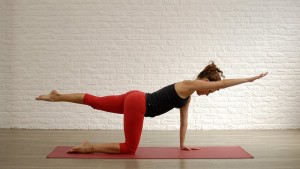
Very similar to the first exercise but this time with the arms outstretched and without the support of one and the opposite leg. With this exercise we continue to provide strength and stabilise the core, we will do 10 repetitions on each side, holding for 10 seconds on each side.
4.Hip lift (3x 5x10")
Ideal for strengthening hamstrings, glutes and abdominal muscles. Perform 3 sets of five repetitions each, holding at the top for 10 seconds.
5.Lateral plank (5x20"/15")
Another variety of the first exercise, but in this case we will focus on the dorsal muscles. We will do 5 repetitions, holding each lift for 20 seconds with a rest of 15 seconds.
6.Strides or lunges (3x20)
With this exercise we will continue to work on the power of our legs and buttocks in a simple way, although it requires some effort. We will do 3 sets of 15-20 repetitions each.
7.Static abdominals
This is another of the classic isometric exercises. To do it, lie on your back, stretch your legs 90º and raise your trunk with your arms outstretched, trying to reach your shoulder blades. Once done, try to hold this position for as long as possible. You can also try it with your legs at 75º, the more you raise your trunk the more effective the exercise will be.
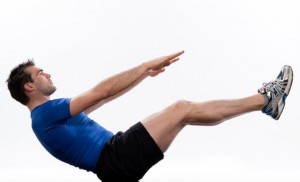
8.Shoulder lift (5x20")
This is a very simple exercise. With a light weight or dumbbell, standing upright, raise your arms laterally until they are at the same height as your shoulders. Hold this position for 20 seconds and repeat the exercise 5 times.
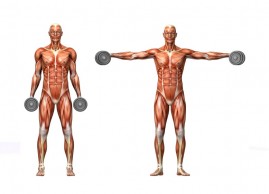
9.Isometric push-ups
This type of push-up is performed with your arms wider than shoulder width apart, and the special feature is that you hold for 10 seconds in the middle of the push-up. Repeat the process as many times as possible.
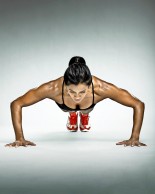
10.Isometric heel lifts 3x30"
This exercise is used to strengthen the soleus and calf muscles. Standing with your legs shoulder width apart, simply lift your heels up on tiptoe and hold the position for 20 to 30 seconds.
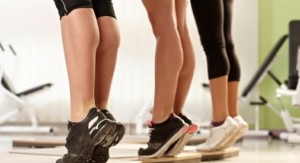
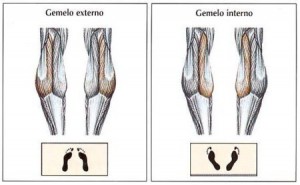
If we lift our heels in an inverted V-shape (heels together and toes open) we work the inner calf, if we do it with the toes together and the heels apart we work the outer calf more.
What do you think of these isometric exercises? Do you think we should include or remove any of them? We'll read you on our social networks!